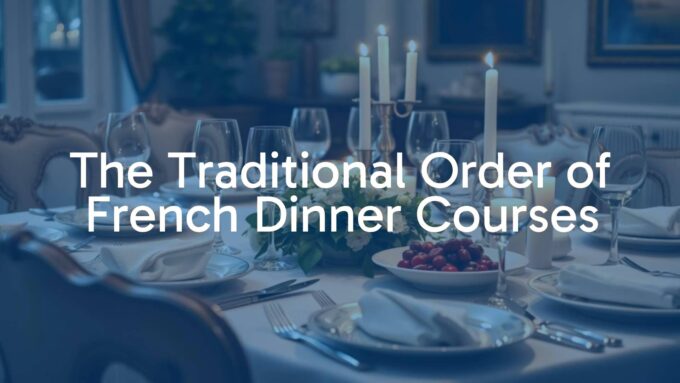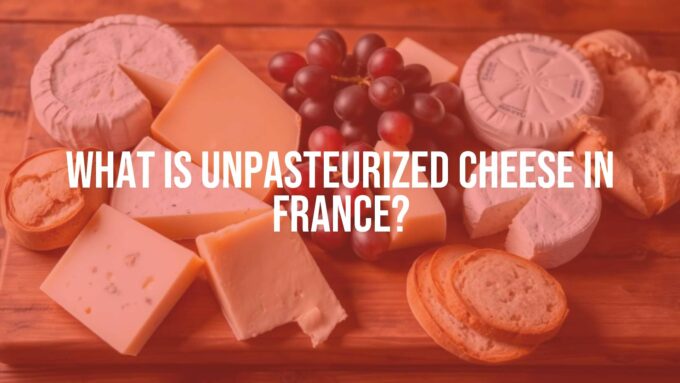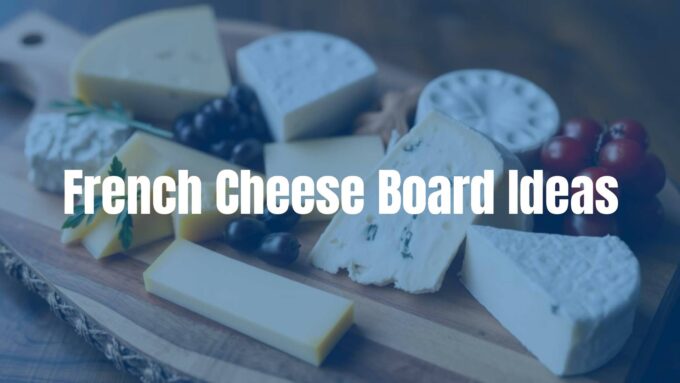Starting with French cooking can seem a bit overwhelming at first. You might picture fancy sauces, delicate pastries, and long hours at the stove. But take heart-there are plenty of simple French recipes that are perfect for beginners. Many rely on a short list of good ingredients and clear steps to deliver great flavor, proving you don’t need a Michelin star to cook French food at home.
Lots of classic French dishes came from home cooks making the most of what they had. That history means much of French cooking is straightforward and focuses on bringing out natural flavors without too much fuss. From cozy stews to easy desserts, these beginner-friendly recipes help you build confidence and learn basic French techniques you can use again and again.

Why Try French Cooking as a Beginner?
French food is famous for deep flavor and tradition. While some think it’s only for pros, there’s plenty for every skill level. As Justin Chapple of F&W says, “French technique has influenced how we cook at home so much, that you probably already know more than you think.” Learning French cooking helps you build core skills that make everyday meals better.
French cooking also encourages care with ingredients. You learn how good butter, fresh herbs, and slow-cooked onions can lift a dish. It’s a chance to turn simple ingredients into something special and enjoy sharing a well-made meal.
What Ingredients Are Common in Simple French Dishes?
Many easy French dishes use basic items you can find anywhere: onions, garlic, tomatoes, zucchini, and bell peppers. Potatoes, eggs, and cheeses like Gruyère and Camembert show up often. Butter, cream, and olive oil add richness. Fresh thyme, rosemary, and parsley bring aroma and flavor.
Chicken, ham, and affordable beef cuts are common, especially for slow-cooked meals. Wine-red or white-is used for cooking too, great for deglazing and building sauces. The magic comes from how these simple ingredients are combined and cooked.
| Ingredient | How it’s used |
|---|---|
| Onions | Caramelized for soups, stews, and sauces |
| Butter | For sautéing, sauces, baking |
| Herbs (thyme, parsley) | Finish soups, roasts, and salads |
| Wine | Deglaze pans, add depth to sauces |
| Eggs | Omelettes, quiches, desserts |
How Do French Cooking Techniques Simplify Meals?
French cooking shines with simple methods that work well. Building a sauce, deglazing, braising, and poaching are key ways to turn basic ingredients into tasty meals. Caramelizing onions, for example, needs time but little effort and makes a strong base for French Onion Soup.
Emulsifying (mixing oil and vinegar into a smooth vinaigrette) is another simple skill that lets you make great dressings and sauces. These methods help you understand how flavors and textures work together, so you can cook with more confidence.
How to Get Started with Easy French Recipes
French recipes can feel like a new language at first, but with a few tips, you’ll be cooking in no time. Start with simple dishes, learn the basics, and don’t be afraid to try new things. French food is about enjoying good meals, so approach it with curiosity.
Set aside some focused time for your first few dishes. Read the whole recipe, gather ingredients (mise en place), and have your tools ready. This will make the process smoother and more fun from the start.
Which Kitchen Tools Help Simplify French Cooking?
You don’t need fancy gear. Most home kitchens already have what you need:
- Sharp chef’s knife and sturdy cutting board
- Cast-iron skillet or Dutch oven
- Whisk for sauces and vinaigrettes
- Grater for cheese
- Baking dish for gratins and roasts
- Madeleine pan (optional, for madeleines)
- Non-stick pan for crêpes
| Tool | Best for |
|---|---|
| Dutch oven | Braises, stews, soups |
| Cast-iron skillet | Searing meats, oven-roasting |
| Whisk | Béchamel, vinaigrettes |
Resourcefulness is very French-use what you have and adapt.
How to Choose Beginner-Friendly French Recipes?
Pick recipes with few ingredients and clear steps. Starters and sides are great for practice. Look for dishes that highlight one main ingredient.
- French Onion Soup (low hands-on time, big flavor)
- Simple green salad with classic vinaigrette
- One-pan Poulet Rôti (roast chicken)
- Ratatouille with fresh produce
Search for “easy French recipes” in cookbooks and trusted websites.
What Are Common Mistakes for Beginners to Avoid?
- Rushing: slow steps like caramelizing onions need time.
- Using poor-quality ingredients: fresh produce, good butter, and proper cheese make a big difference.
- Fear of French terms: most recipes explain them well.
- Overcomplicating: keep it simple and let ingredients shine.
- Avoiding mistakes: errors help you learn. Keep going.
Beginner-Friendly French Appetizers and Soups
Appetizers and soups are a smart place to start. They’re usually simpler than mains and help you build skills without stress. They fit many occasions-light lunch, dinner starter, or cozy bowl on a cool night. These picks give classic French flavor with little fuss.
They also focus on a few good ingredients, which helps beginners learn basic steps and appreciate fresh produce.
Classic French Onion Soup: Tips for First-Timers
Few dishes say “French” like French Onion Soup. It’s rich, savory, and topped with a cheesy crouton. It looks fancy but is beginner-friendly. The key is slow-cooking the onions until deeply golden. This takes time but not much effort-let them slowly turn sweet and brown.
Helpful tips:
- Use a heavy pot to prevent burning.
- Slice onions evenly for even cooking.
- Use a hearty beef broth for depth.
- Top with baguette and Gruyère, then broil until bubbly and golden.
Gougères (Cheese Puffs): The Easiest Savory Snack
Gougères are light, airy cheese puffs made from pâte à choux, the same dough used for éclairs. They come together fast and bake to a golden puff, perfect for snacks or parties.
Basic method: boil butter and water, stir in flour, then beat in eggs and cheese (Gruyère or Comté). Spoon or pipe onto a sheet and bake until puffed and browned. They look fancy but are simple to make-a great intro to choux pastry.
Simple French Salads for Starters
French salads focus on the dressing. Use any greens-arugula, spinach, mixed leaves-but keep the vinaigrette light. Skip heavy, creamy dressings. Go for lemon vinaigrette or oil and vinegar to let the produce shine.
Salade Niçoise is a classic: butter lettuce, tomatoes, cucumbers, olives, hard-boiled eggs, and tuna, all dressed with a lively vinaigrette. It’s a bright way to start a meal.
Potato and Leek Soup (Vichyssoise): A Gentle Introduction
Vichyssoise is a smooth potato and leek soup, often served cold, though serving it hot works well too. It’s hearty, simple, and relies on the sweetness of leeks and the creaminess of potatoes.
Steps: sauté leeks, add potatoes and broth, simmer until tender, blend smooth, and add a splash of cream. The result is silky and satisfying, great warm or chilled.
Easy French Main Courses for New Cooks
Moving to main dishes doesn’t have to be a big jump. French cooking offers many simple mains that feel special. They use basic techniques you can reuse in other meals and focus on flavor without complex prep.
Many of these dishes are mostly hands-off after the initial steps, making them weeknight-friendly yet nice enough for guests.

Poulet Rôti (Roast Chicken): One Pan, Maximum Flavor
Roast chicken is comfort food, and the French version is a great example of simple cooking done well. Julia Child’s method seasons the bird inside and out, stuffs the cavity with sautéed vegetables, lemon, and herbs, and rubs the skin with butter. Trussing helps it cook evenly for juicy meat and crisp skin.
It’s a one-pan wonder. The drippings flavor any vegetables in the pan and make a quick pan sauce. Big payoff, little fuss.
Ratatouille: The Beginner’s Vegetable Stew
Ratatouille is a classic vegetable dish from Provence. At home, most cooks simply chop and stew the vegetables together. It’s easy, flexible, and a great meat-free main.
Common ingredients:
- Tomatoes
- Zucchini
- Eggplant
- Bell peppers
- Onions and garlic
- Herbs like thyme and basil
Serve hot or cold, with crusty bread, or as a side to chicken or fish. It’s also packed with fiber and vitamins.
Croque Monsieur: The Essential French Ham and Cheese Sandwich
This bistro favorite takes grilled cheese up a notch: Gruyère, ham, a bit of Dijon, and creamy béchamel. Cook until the top is golden and bubbly.
It’s quick, cozy, and great for dinner. Add a fried egg on top to make a Croque Madame.
Chicken Dijon: Quick Weeknight Classic
“Poulet à la moutarde” is a creamy chicken dish from the Dijon area. It’s fast enough for a weeknight and nice enough for guests. The sauce often includes white wine, cream, chicken stock, shallots, garlic, and Dijon mustard. Melissa Clark suggests using drumsticks for even cooking. Serve with mashed potatoes or green beans.
French Omelette: Mastering the Essential Technique
A French omelette is a must-learn skill. Omelette aux fines herbes (with fresh herbs) is simple and full of flavor. Unlike fluffy American versions, the French style is rolled with a smooth outside and a soft, almost custardy center.
How to cook it: lightly whisk eggs, pour into a hot buttered pan, stir and push set eggs to the center while tilting the pan so liquid egg runs underneath. When just set and still creamy, roll or fold and serve right away. Try goat cheese and sun-dried tomatoes for a tasty filling.
Simple French Sides and Salads to Complete the Meal
Good sides and salads bring balance and texture. For beginners, simple vegetable sides are a smart choice. They’re quick to make and pair well with many mains.
These dishes fit busy nights yet still feel special. Learn a few staples and you’ll round out your plates with ease.
Salade Niçoise: Fresh and Protein-Packed
This bright, filling salad from the Riviera is easy to assemble and great for warm days. It usually includes butter lettuce, tomatoes, cucumbers, olives, hard-boiled eggs, and tuna. Variations may add artichokes, fava beans, radishes, or basil.
A lemony vinaigrette ties everything together. It can serve as a full meal. Add a baguette and a glass of Rosé to complete the experience.
Sautéed Haricots Verts (French Green Beans): Minimal Fuss
Thin, tender French green beans cook fast and taste great with garlic and butter. A sprinkle of herbs adds freshness.
They turn tender-crisp in minutes and pair well with roast chicken or fish.
Roasted Mini Potatoes: A Foolproof Side
Mini potatoes roast up crispy outside and soft inside. Toss with olive oil, rosemary, and roasted garlic, then bake until golden and tender.
They go with almost any main and can be seasoned in many ways.
Easy French Desserts and Baked Goods for Beginners
No trip through French food is complete without sweets. While some pastries are complex, many desserts are beginner-friendly and use only a few ingredients. They’re great for guests or a simple treat with coffee or tea.
From thin crêpes to rustic tarts, these recipes show that French baking can be simple and fun.

Classic French Crêpes: Sweet or Savory Options
Crêpes are thin pancakes that are simple to make if you’ve ever made regular pancakes. The batter is flour, eggs, milk, and a bit of sugar, whisked smooth.
Fill with strawberries and cream, butter and sugar, or Nutella for sweet options. For savory, try ham and cheese. Once you learn crêpes, you can make many styles of meals and desserts.
Madeleines: Simple Shell-Shaped Cakes
Madeleines are small, moist cakes baked in a shell-shaped pan. They look fancy but mix up fast, often in one bowl, and bake in minutes.
Dust with powdered sugar and serve warm. Their buttery flavor and soft crumb make them hard to resist.
French Apple Tart: A Rustic Favorite
This tart can be easier than pie, especially if you use store-bought puff pastry. Arrange thin apple slices over the pastry, sprinkle with sugar and dot with butter, then bake until the apples are tender and the crust is golden and flaky.
The result looks impressive and tastes like pure apple goodness.
Chocolate Mousse: Decadent With Few Ingredients
Chocolate mousse feels fancy but needs only a few items and simple steps. Good chocolate is key. Fold whipped cream and/or beaten egg whites into melted chocolate and yolks, then chill until set.
You get a smooth, airy dessert with big chocolate flavor and little effort.
Tips for Success with Easy French Recipes
French cooking at home should be enjoyable. A few smart habits can make your results more consistent. Plan ahead, organize your ingredients, and keep your steps simple.
Cooking is both skill and feel. Measure when needed, but also taste and adjust. These tips help you make French dishes part of your regular routine.
How to Adapt French Recipes for What You Have
Feel free to swap ingredients:
- Crème fraîche → sour cream in sauces or toppings
- Gruyère → Swiss or cheddar in gratins
- Bell peppers → zucchini or eggplant in ratatouille
Many rustic recipes are flexible. Small changes keep the spirit of the dish, reduce waste, and make cooking easier.
Where to Find Affordable French Ingredients
- Shop seasonal produce at grocery stores or farmers’ markets.
- Buy good butter, Dijon mustard, and basic cheeses at regular supermarkets.
- Use frozen haricots verts if fresh are pricey.
- Stock pantry staples like olive oil, vinegar, and dried herbs to make quick meals.
How Meal Prep Can Help Beginners Succeed
Prep ahead to save time:
- Chop onions and vegetables for soups and ratatouille the day before.
- Make a big batch of French Lentil Soup for easy lunches.
- Roast a chicken on Sunday for sandwiches, salads, and quick dinners during the week.
Planning helps reduce stress and food waste while keeping home cooking on track.
Frequently Asked Questions about Easy French Recipes for Beginners
Are French Recipes Too Difficult for Beginners?
No. While French food can seem complex, many home-style dishes are simple and use a few good ingredients and clear steps. The elegance often comes from careful prep, not tricky methods.
Start with basics like omelettes, crêpes, simple salads, or roast chicken. Pick recipes made for ease and give yourself time to learn. You’ll see that French cooking is very doable and rewarding.
How Long Do Simple French Dishes Take to Prepare?
Times vary, but many dishes are quick. A French omelette or sautéed haricots verts can take 10-15 minutes. French Onion Soup needs a longer simmer for the onions, but the active work is short.
One-pan meals like roast chicken or ratatouille need some prep, then mostly bake or simmer on their own. Fast weeknight recipes-like Mediterranean Salmon or One-Pot Cheesy Chicken & Orzo-can be done in under 30 minutes. Prepping parts ahead trims daily cook times.
Can You Make French Recipes on a Budget?
Yes. French cooking grew from making the most of simple, affordable ingredients. Seasonal vegetables cost less and taste better. Cheaper cuts of meat work well for stews like Beef Bourguignon or Coq au Vin. Eggs, potatoes, and lentils are budget-friendly staples.
Make sauces and vinaigrettes at home to save money. With a few well-chosen ingredients, you can cook flavorful French meals without spending a lot.













Leave a comment